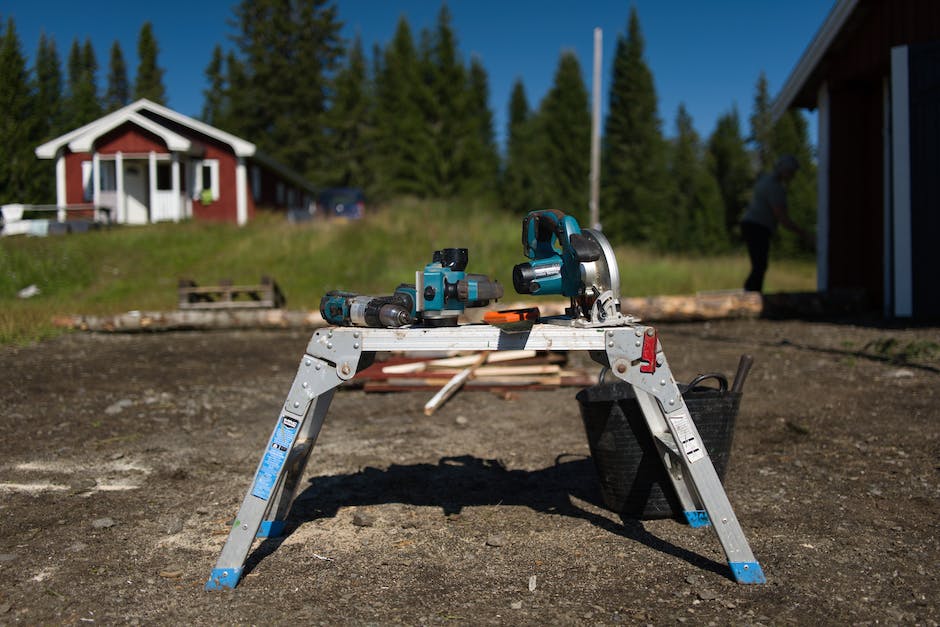Tree girdling is a clever but little-known forestry practice that plays a crucial role in managing tree growth and optimizing produce.
Whether you are an arborist mastering your trade or an informed backyard farmer, understanding the concept and methodology behind tree girdling is a valuable asset.
Join us as we go into the depths of tree girdling, exploring its essence, its utilities, and the reasons that put it into practice.
We will also unpack the safe handling and operation of the various tools used in this process.
What is Tree Girdling
Tree girdling is an intriguing aspect of gardening that strikes a balance between science, art, and nature’s innate wisdom.
To put it simply, tree girdling is a unique strategy used by many experienced gardeners and farmers to improve fruit production on trees like peaches, apples, and even coffee beans. Let’s delve a bit deeper for greater understanding.
Tree girdling is a deliberate process of creating a thin incision or cut on the tree trunk.
This is done around the full circumference of the tree and requires careful handling.
This wound, or ‘girdle,’ interrupts the downward flow of nutrition and sugars produced by photosynthesis from the leaves through the trunk to the roots.
It might appear a bit harsh, but the magic lies in how the tree responds to girdling. It sort of tricks the tree into believing that it needs to produce more fruits to ensure its survival. The tree then begins to channel nutrients, sugars, and energy above the girdle, resulting in prolific fruit production. This millennia-old method has been a successful tool to increase both the number and quality of the fruit.
More than just an ad-hoc method, girdling requires specific skills and knowledge.
While the benefits seem enticing, remember to move cautiously, as an ill-placed or untimely girdle can harm or even kill the tree.
The incision needs to be neither too deep nor too shallow just enough to get through the bark and cambium layer without damaging the wood underneath.
Timing is also crucial in the girdling process. Ideally, the girdling should occur when the tree is not in its peak growing season, but beginning the phase of bearing fruits. Depending on the type of tree, this might mean late winter or early spring.
Remember, tree girdling is more of a technique to improve significantly, rather than just maintain, fruit production.
It’s not recommended for young or weak trees that are still establishing themselves or trees that are already bearing enough fruit. Also, girdling is not generally suited for all types of fruit trees.
To the reader eager to broaden their gardening skills, embark on this technique mindfully.
It may require a little more effort and practice, but the results would certainly delight anyone with a nurturing spirit for nature and a joy of harvesting bountiful, luscious fruits from their own garden.
In a way, learning about tree girdling parallels a parenting journey.
We are constantly seeking ways to nurture and assist our loved ones in flourishing, while drawing wisdom from nature and science.
As trees respond to girdling, our approach to different life situations determines our growth.
The key, be it in the garden or life, is understanding, patience, and persistence for a fruitful outcome.
As you explore tree girdling, may it add a fascinating and fruitful dimension to your gardening journey.

Appropriate Tools and Safety Measures for Tree Girdling
Primarily, you only need two types of tools for tree girdling: a handsaw and an axe.
A handsaw is employed to make clear and clean cuts around the bark while an axe helps in chipping away the bark between those cuts.
Remember, these tools must be sharp to result in clean cuts that avoid unnecessary damage to the tree.
While purchasing tools, consider the tree size. For smaller trees, a hatchet or ordinary pruners will suffice, but for larger ones, you may require more full-sized tools.
Also, remember to keep a file on hand to sharpen tools as needed.
Now let’s get real. Working with sharp tools and robust trees is not a child’s play.
Safety measures must be adopted. First and foremost, always wear gloves to protect your hands from the sharp tools.
Opt for heavy-duty leather gloves that provide an excellent grip and protect your hands from splinters as well.
Eye protection is crucial too. Dust, splinters, or any flying debris while girdling can cause serious damage to your eyes.
So, prevent any unforeseen mishaps by wearing safety glasses or goggles.
Working with both an axe and saw, always ensure you’re in a stable position before starting the job.
A secure footing is necessary to prevent slips and potential accidents.
Remember, comfortably fitting clothes are your best friend during this process.
Avoid baggy, loose clothing that may potentially get stuck in any tools or even the tree itself.
Lastly, but most importantly, always keep a first aid kit nearby.
Even with the utmost precautions, small injuries can happen. Quick and immediate access to basic first aid is crucial to prevent such minor injuries from becoming problematic.
And voila! That’s it, friends! You have your tools, and you’re equipped with safety measures. The love affair between you and your trees is now just a handsaw swipe away.
Oh, and let’s not forget, have patience. The same way parenting involves nurturing, care, and patience, so does tree girdling.
Just as we respect our children’s unique pace and time to grow and flourish, we must also respect nature’s timing for our trees.
Let’s go out there, get our hands dirty and experience the miracles of tree girdling.
Enjoy the outdoors, the satisfying work of caring for our trees, and the sweet fruits of our labor quite literally!

The Tree Girdling Process
Titles:
Step-by-Step Guide to Properly Girdle a Tree
Detailed Instructions on Proper Tree Girdling
Creating a girdle around our little leafy friend may seem intimidating, but fret not, fellow green thumb enthusiasts!
This article will shine some light on the subject and take you through the necessary steps one by one.
Just like nurturing a child, tree girdling requires not only love and patience but also the right tools.
Depending on the size and type of the tree, you may require different tools like a hand axe, pocket knife, chisel, or a handsaw.
Each one has its pros and cons, so select wisely by considering what fits best for your tree size and your comfort of use.
Safety should always be your first priority when engaging in any outdoor activity, and tree girdling is no exception.
When dealing with sharp tools, handling them with care is a must – and not just for the tree’s sake!
Make sure you’re wearing sturdy gloves and eye protection to prevent any unfortunate accidents.
And remember – we’re only trying to improve the tree’s condition, not harm it, so gentle handling is key.
Whenever one is dealing with potentially dangerous tools, solid footing is crucial. Especially when wielding an axe or saw, it’s important to make sure we are stable on the ground.
Now, just like that first day of kindergarten, dressing right is significant. When girdling a tree, being comfortable is our goal.
Wear something you don’t mind getting dirty in, and also offers protection from any potential scrapes or pokes from our tree friends.
Just like we always assure to have a first-aid box inside our home, ensuring a first-aid kit in proximity when girdling a tree can mitigate those bumps and nicks into minor issues rather than major complications.
Now onto the task itself. Girdling a tree requires the same patience we practice while raising our little ones.
Hasty actions won’t bear fruit, metaphorically and literally.
Take your time. Be gentle with the tree. After all, girdling is a delicate balance between causing enough damage to interrupt nutrients but not killing them.
And finally, just as we find joy in watching our children grow and thrive, enjoy the process of tree girdling too.
A lovely day spent outside, nurturing our natural companions is a reward in itself. And then, of course, there’s the fruitful bounty to look forward to!
So, embarking on tree girdling is essentially embarking on a journey.
A journey with trees that ends with trays of delicious ripe fruits! After all, as they say, ‘the fruits of patience are the sweetest.’ Happy girdling, everyone!

A healthy respect for nature, the right set of tools, and a comprehensive knowledge guide us through the process of girdling.
It’s not just about making cuts around a tree; it’s about understanding when to do it, where to cut, and how to know when you’ve done it right.
When practiced correctly and safely, tree girdling becomes more than a forestry task it evolves into a nurturing gesture towards our woodland companions.
May the knowledge unveiled in this exploration foster your appreciation of the art and science behind tree girdling as it is not a destruction of life but a means to control and guide growth within our shared environment.




